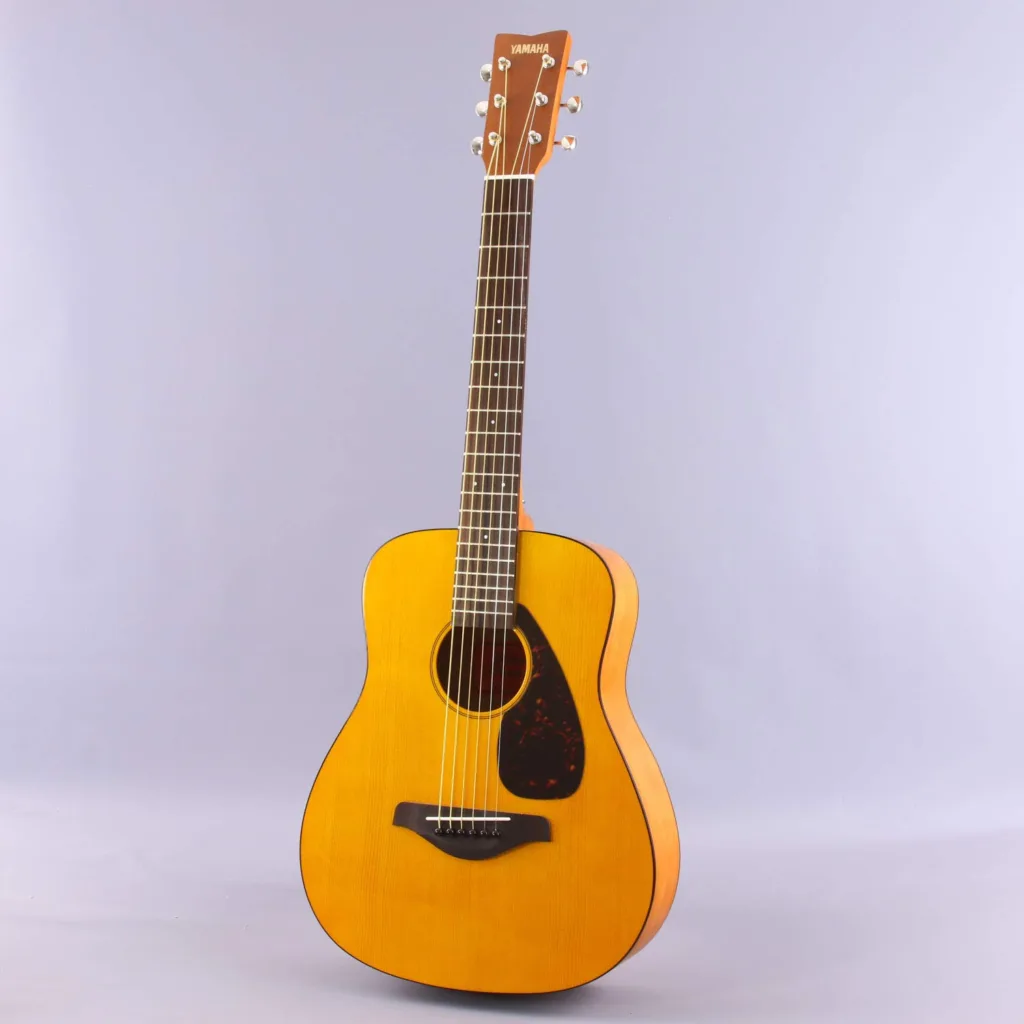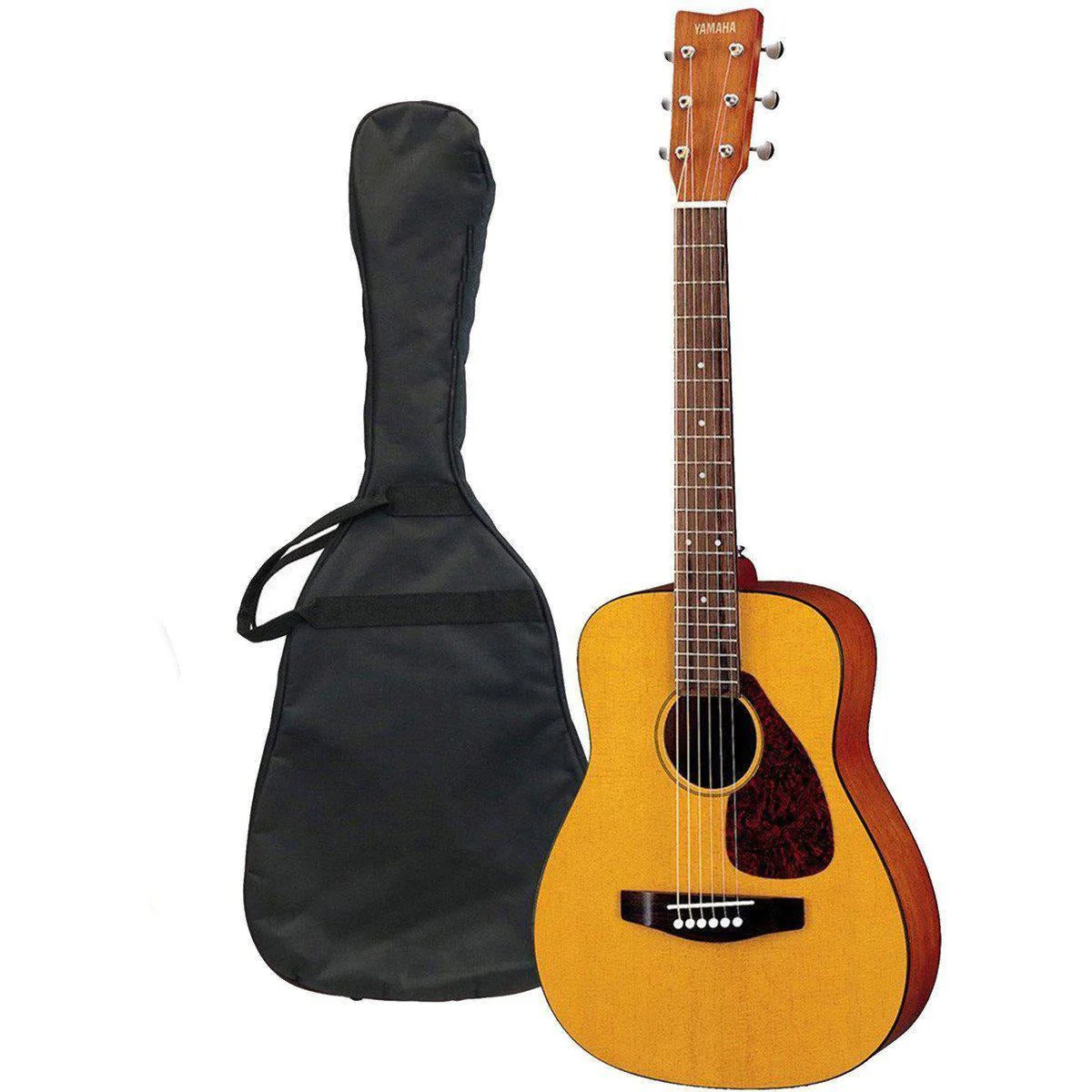Are you in the market for a new guitar but feeling overwhelmed by all the size options? Don’t worry, I’ve got you covered. Today, we’re diving into the world of junior size guitars and everything you need to know before making a purchase. As someone who has been playing guitar for years, I understand the importance of finding the right fit. So let’s explore what exactly a junior size guitar is and whether or not it’s the right choice for you.
In this article, we’ll discuss what makes a guitar “junior size,” how it differs from standard sizes, and which age group it’s best suited for. We’ll also touch on some common misconceptions about junior size guitars and give expert tips on choosing the perfect one for your needs. Whether you’re buying for yourself or looking to get your child started with music lessons, this comprehensive guide will have all the information and answers you need. Let’s tune in!
So, What is a junior size guitar??
A junior size guitar is a smaller version of a standard acoustic or electric guitar, designed specifically for younger players. It typically has a shorter neck and smaller body, making it easier for children to handle and play comfortably. This type of guitar is also known as a 3/4 size or travel guitar.
Junior size guitars are perfect for beginners who may have trouble handling the larger size and weight of a full-sized instrument. They are also great for kids who are just starting out on their musical journey, as they can easily transition to a standard sized guitar once they grow older.
When purchasing a junior size guitar, it’s important to consider the age and height of the child using it. Some models may be more suitable for younger children while others may be better suited for older kids. It’s always best to try out different sizes in person before making a purchase.
In addition to being smaller in size, junior guitars often have thinner strings which require less finger strength to play. This makes them ideal for developing hand dexterity and coordination in young players.
While these guitars are primarily designed with children in mind, they can also be used by adults who prefer a smaller instrument or those with petite hands. They are also great options for traveling musicians due to their compact size.
Overall, junior size guitars offer an accessible option for beginners and young musicians alike without compromising on sound quality or playability. With proper care and maintenance, they can provide years of enjoyment and serve as stepping stones towards mastering the full-sized versions later on.
Understanding the Specifications of a Junior Size Guitar
When choosing a junior size guitar, it’s essential to understand its unique specifications tailored for young players. These guitars are typically designed with more compact dimensions to suit smaller hands and shorter arms. The scale length, or the distance between the nut and the bridge, usually measures around 22-24 inches compared to the standard 25-26 inches on full-sized guitars. This shorter scale makes it easier for kids to press down the strings and comfortably reach all frets.
Moreover, junior guitars often feature a lighter body weight which helps prevent fatigue during practice sessions. They come in various shapes like dreadnoughts or parlors but scaled-down versions of these models. Many include nylon strings instead of steel ones because they’re softer on tender fingertips and less likely to cause pain after extended playing periods. Additionally, these instruments frequently have a narrower neck width which aids in reaching chords without straining tiny fingers.
Aside from physical attributes, it’s also crucial that junior guitars produce quality sound so young musicians can appreciate their progress and stay motivated. Despite their reduced size, many reputable brands ensure these smaller instruments maintain good resonance and tone clarity by using quality woods such as spruce tops paired with mahogany backs and sides. Some even come equipped with built-in tuners making it simpler for beginners to keep their instrument sounding right without extra hassles.
Ultimately:
- The combination of manageable size
- Lighter weight
- Nylon strings
- Quality construction
These factors make junior guitars an excellent choice for teaching children how to play music effectively while keeping them engaged through fun learning experiences!
Distinguishing Between a Junior Size and Standard Size Guitar
When you’re shopping for a guitar, it’s crucial to realize that not all guitars are made the same. One key difference lies in their size, particularly between junior and standard sizes. A junior size guitar is typically smaller and lighter, designed with younger players or those with petite frames in mind. These guitars often have a shorter scale length, meaning the distance from the bridge to the nut is reduced. This makes it easier for small hands to reach around the fretboard, providing a more comfortable playing experience.
On the other hand, standard size guitars are crafted for adult players or those who have outgrown their junior instruments. They offer a fuller sound due to their larger body and longer scale length; this means better resonance and richer tones. Standard guitars can be somewhat challenging for kids or beginners because of their bigger dimensions and heftier build.
In summary:
- Junior Size:
– Smaller
– Lighter
– Shorter Scale Length
- Standard Size:
– Larger
– Heavier
– Longer Scale Length
Understanding these differences helps you pick an instrument that matches your needs perfectly!
Read also: yamaha apx600 acoustic electric guitar
Determining the Ideal Age Group for a Junior Size Guitar
Choosing the perfect age group for a junior size guitar can make all the difference in nurturing a young musician’s journey. Generally, these guitars are designed with kids in mind, typically aged between 6 and 12 years old. But it’s not just about age; height and hand size play crucial roles as well. A child who is smaller or has tiny hands might struggle with a full-size guitar’s dimensions, making it frustrating to learn and potentially dampening their enthusiasm.
Junior size guitars offer several benefits that cater specifically to younger players. For one thing, they’re lighter and easier to handle, which means your child won’t tire quickly from holding up a heavy instrument. Smaller necks on these guitars also mean little fingers don’t have to stretch far, reducing strain and helping beginners master chords more easily. Given how important positive early experiences are when picking up an instrument for the first time, opting for a junior size guitar can set the stage for lifelong musical enjoyment.
It’s essential to match the instrument with your child’s physical capability to ensure they remain comfortable while playing. The proper fit not only helps prevent bad habits but also fosters better technique right from the start.
To find that ideal balance:
- Test different models
- Pay attention to how naturally they hold it
- Ensure fingers reach frets without discomfort
By thoughtfully considering these factors, you’re setting up young learners for success—and possibly sparking a passion they’ll carry throughout their lives.

Addressing Misconceptions about Junior Size Guitars
Many people assume junior size guitars are just toys, but they actually offer a lot more than meets the eye. Crafted with care and precision, these smaller instruments provide a fantastic entry point for young musicians or anyone with smaller hands. Junior guitars feature high-quality materials and impressive craftsmanship that can rival their full-sized counterparts. They aren’t just downsized versions; they’re designed to produce rich tones and excellent playability.
One of the most appealing aspects is how user-friendly junior guitars are. Their petite stature makes them easier to handle, perfect for beginners who might struggle with larger models. Despite being small, they pack a punch in terms of sound quality.
Various top brands manufacture junior guitars using advanced technology to ensure each note rings clear and true.
Some benefits include:
- Comfortable sizing: Ideal for smaller hands.
- Portability: Easier to carry around.
- Sonic quality: Surprisingly good sound.
It’s also worth mentioning that many professional musicians use junior size guitars during travel or intimate gigs because of their convenience without sacrificing much on sound integrity.
If you’re considering learning guitar but feel intimidated by standard sizes, give a junior guitar a try—you might be pleasantly surprised by what it has to offer!
You may also like: is donner a good piano brand
Expert Tips on Choosing the Right Junior Size Guitar for Your Needs
Finding the perfect junior size guitar can feel like solving a delightful puzzle. You want to unlock a world of musical magic for your child, but where do you start? First off, consider the fit. A guitar should be comfortable enough for small hands to hold and play with ease. Opt for a shorter neck and smaller body so young fingers don’t strain reaching those chords. Remember that kids grow quickly, so aiming for an instrument that’s slightly bigger than their current size might pay off as they won’t outgrow it too soon.
Next up is the sound quality—because who wants to play something that doesn’t sing? Look at guitars made from different woods like spruce or mahogany; these materials can have quite an impact on the tone. It’s not just about how it sounds now but how it will age over time. You may also want to think about whether you prefer acoustic or electric guitars based on your child’s interest in music genres:
- Acoustic: Great if they love folk or classical tunes.
- Electric: Perfect for rock enthusiasts!
Lastly, take durability into account. Kids can be rough with their toys; make sure this instrument withstands enthusiastic strumming sessions without falling apart! Happy playing!
Making an Informed Decision About Purchasing a Junior Sized Guitar
Buying a junior-sized guitar isn’t just about picking the smallest instrument on the rack. It’s more like finding that perfect match for a young, budding musician. When you start looking, you’ll notice these guitars are tailored to fit smaller hands and shorter arms, making it easier for kids to learn without straining themselves. The lighter weight also means they can practice longer without feeling weighed down.
Key aspects to consider include:
- Scale Length: This determines how far apart the frets are and therefore affects playability.
- Body Size: A smaller body feels comfortable against a child’s torso.
- Neck Width: A narrower neck makes it simpler for small fingers to press down chords correctly.
When it comes to quality versus price, it’s often tempting to settle for something inexpensive. But remember, cheap instruments might lead to frustration due to poor sound or construction issues. Look out for reputable brands that offer good value but still maintain decent craftsmanship—brands like Yamaha or Fender have options specifically designed for younger players.
Another aspect worth considering is whether your child would prefer an acoustic or electric guitar. Acoustic models are great because they’re straightforward—no need for amps or cables—but electrics can be easier on tiny fingers as they usually have softer strings and lower action (the distance between strings and fretboard). To sum up: take your time in selecting; this decision could spark years of musical joy!

